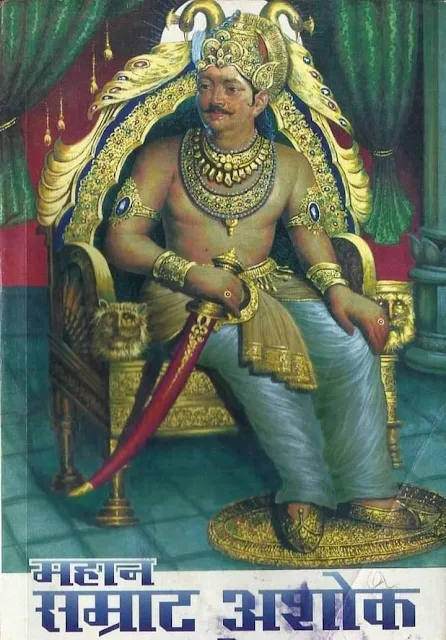Chandragupta Maurya | चंद्रगुप्त मौर्य कौन है ?
Chandragupta Maurya , the founder of the Maurya Empire was one of the most important and influential figures in Indian history . His rise to power and his achievements as a ruler had a significant impact on the political landscape of ancient India .
 |
| Chandragupta Maurya |
Chandragupta Maurya was born in 340 BCE in Pataliputra, which is present-day Patna in the eastern Indian state of Bihar . Not much is known about his early life but he is believed to have come from a humble background . According to historical accounts, he was born into a family of the Kshatriya (warrior) caste , which was a respected and powerful social group in ancient India .
Chandragupta Maurya's life took a significant turn when he came into contact with Chanakya , also known as Kautilya a renowned scholar , strategist and political theorist . Chanakya recognized Chandragupta's potential and took him under his wing. Together , they embarked on a journey to challenge the ruling Nanda Empire and establish a new kingdom .
With Chanakya's guidance , Chandragupta Maurya assembled a formidable army and started his quest for conquest . The Nanda Empire , which had been ruling over much of the Indian subcontinent , was known for its oppressive and unjust rule . Chandragupta and Chanakya saw an opportunity to overthrow the Nanda dynasty and bring about a new era of governance .
After years of strategic planning and military campaigns, Chandragupta Maurya's forces managed to defeat the Nanda Empire and he emerged as the new ruler . This marked the beginning of the Maurya Empire, which would go on to become one of the most powerful and prosperous empires in ancient India .
One of Chandragupta's most significant achievements was the consolidation of his empire's territories . He launched military campaigns to expand his kingdom , conquering large parts of present-day northern and central India . His conquests extended his rule over a vast and diverse region, bringing together a wide range of cultures, religions and languages under a centralized authority .
Under Chandragupta's rule the Maurya Empire became a formidable force in the Indian subcontinent . His military prowess and strategic vision allowed him to establish a strong and stable administration, ensuring efficient governance over a vast and diverse empire . His conquests and administrative reforms laid the foundation for a unified and prosperous state , marking a significant turning point in the history of ancient India .
One of the key features of Chandragupta Maurya's reign was his efficient and just administration . He established a sophisticated bureaucracy and a system of governance that allowed for effective management of the empire's vast resources and diverse population . His administration was marked by a fair and efficient distribution of resources, promotion of trade and commerce and the development of infrastructure, including roads and irrigation systems.
Chandragupta Maurya's rule was also characterized by his dedication to social welfare and the well-being of his subjects . He implemented policies aimed at improving the living conditions of the people, including the provision of relief during times of famine and the establishment of hospitals and welfare institutions . His efforts to promote the welfare of his subjects earned him the respect and loyalty of the people he ruled .
Another significant aspect of Chandragupta's reign was his diplomatic and foreign policy initiatives . He maintained diplomatic relations with neighboring states and established alliances to safeguard the interests of the Maurya Empire . His shrewd diplomacy and military prowess allowed him to expand his influence beyond the Indian subcontinent, establishing the Maurya Empire as a dominant power in the region .
Chandragupta Maurya's achievements as a ruler and a conqueror were further highlighted by his succession planning . In his later years, he decided to relinquish the throne and retire to a life of asceticism . He abdicated the throne in favor of his son, Bindusara, ensuring a smooth transition of power and the continuity of his legacy .
Chandragupta Maurya's contributions to Indian history and his legacy as a visionary ruler continue to be celebrated to this day . His establishment of the Maurya Empire laid the groundwork for a period of political stability, economic prosperity and cultural development in ancient India . His legacy also influenced the subsequent dynasties and rulers who followed, leaving a lasting imprint on the history of the Indian subcontinent .
Chandragupta Maurya's life and achievements stand as a testament to his exceptional leadership, strategic vision and dedication to the welfare of his people . His rise to power, conquests, administrative reforms and diplomatic initiatives cemented his status as one of the most influential and revered figures in Indian history . The Maurya Empire, under his rule, became a shining example of efficient governance and prosperity leaving behind a lasting legacy that continues to inspire and resonate with admirers of history and ancient civilizations .







